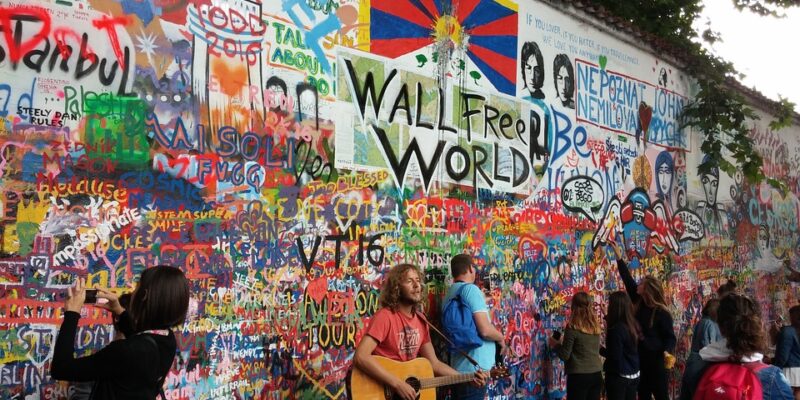Reality TV: The Evolution of a Cultural Phenomenon
The Rise of Reality TV
Reality television has become a ubiquitous part of modern entertainment, with countless shows captivating audiences around the world. But how did this genre come to dominate our screens? The rise of reality TV can be traced back to the early 2000s, when shows like “Big Brother” and “Survivor” burst onto the scene and captured the public’s imagination.
These early reality shows were relatively simple in concept – a group of people would be placed in a controlled environment, with cameras capturing their every move. The appeal of these shows lay in their voyeuristic nature, allowing viewers to watch real people navigate challenges and interpersonal dynamics in real time.
The Reality TV Boom
As audiences became more drawn to the drama and unpredictability of reality TV, networks quickly jumped on the bandwagon, producing a slew of new shows to meet the demand. From dating competitions like “The Bachelor” to talent shows like “American Idol,” reality TV began to encompass a wide range of genres and formats.
The mid-2000s saw a boom in reality TV programming, with networks competing to create the next big hit. Shows like “The Real Housewives” franchise and “Keeping Up with the Kardashians” capitalized on the public’s fascination with celebrity culture, offering a glimpse into the lives of the rich and famous.
The Evolution of Reality TV
Over the years, reality TV has evolved and adapted to changing tastes and trends. While some shows have faded into obscurity, others have continued to thrive and reinvent themselves to stay relevant. One of the key factors driving the evolution of reality TV is the rise of social media and digital technology, which has fundamentally changed the way we consume and interact with media.
Social Media and Reality TV
Social media has had a profound impact on reality TV, allowing audiences to engage with their favorite shows and contestants in real time. Platforms like Twitter and Instagram have become crucial tools for promoting and discussing reality TV, with fans using hashtags and comments to share their thoughts and opinions.
Many reality TV shows now incorporate social media into their format, encouraging viewers to interact with the show online. Contestants often have their own social media accounts, where they share behind-the-scenes glimpses and interact with fans. The immediacy and intimacy of social media have blurred the lines between reality TV and real life, creating a more immersive viewing experience.
Digital Disruption
The rise of digital streaming services like Netflix and Hulu has also disrupted the traditional TV landscape, offering viewers more choices and flexibility in how they consume content. Reality TV has found a new home on these platforms, with original shows and documentaries catering to a diverse range of interests.
As viewers increasingly turn to streaming services for their entertainment fix, traditional networks have had to adapt and innovate to stay relevant. Many reality TV shows now offer binge-watching options, allowing fans to watch multiple episodes in one sitting. The success of shows like “Queer Eye” and “Nailed It!” on Netflix has demonstrated the staying power of reality TV in the digital age.
The Future of Reality TV
As we look to the future, it’s clear that reality TV will continue to evolve and shape our cultural landscape. With new technologies and platforms constantly emerging, the possibilities for reality TV are endless. From augmented reality competitions to interactive storytelling experiences, the future of reality TV promises to be exciting and unpredictable.
Diversity and Inclusion
One of the key trends shaping the future of reality TV is a push for more diversity and inclusion on screen. Audiences are increasingly demanding representation and authenticity in the shows they watch, leading to a more diverse range of contestants and storylines. Shows like “Queer Eye” and “RuPaul’s Drag Race” have led the way in showcasing diverse voices and experiences, challenging traditional norms and stereotypes.
Interactive Experiences
Another exciting development in reality TV is the rise of interactive experiences that allow viewers to participate in the show in real time. Shows like “The Circle” and “Bandersnatch” have experimented with interactive storytelling, giving audiences the power to shape the outcome of the show through their choices.
The future of reality TV is bright and full of possibilities, with new technologies and formats driving innovation and creativity. As audiences continue to demand authentic and engaging content, reality TV will continue to evolve and adapt to meet the changing tastes and preferences of viewers.
In conclusion, reality TV has come a long way since its early days, evolving from simple game shows to complex and immersive experiences. With social media and digital technology shaping the way we consume and interact with media, the future of reality TV promises to be exciting and unpredictable. By embracing diversity, inclusion, and interactivity, reality TV will continue to captivate audiences and push the boundaries of storytelling.
